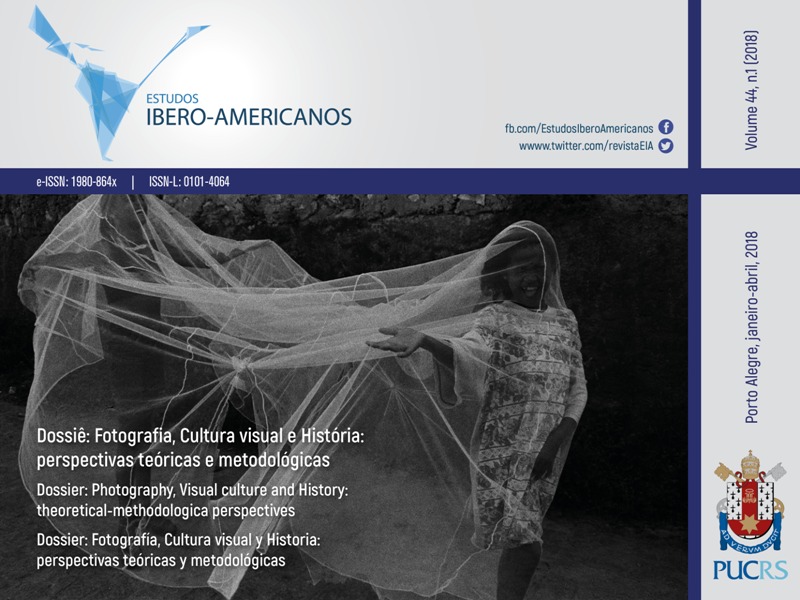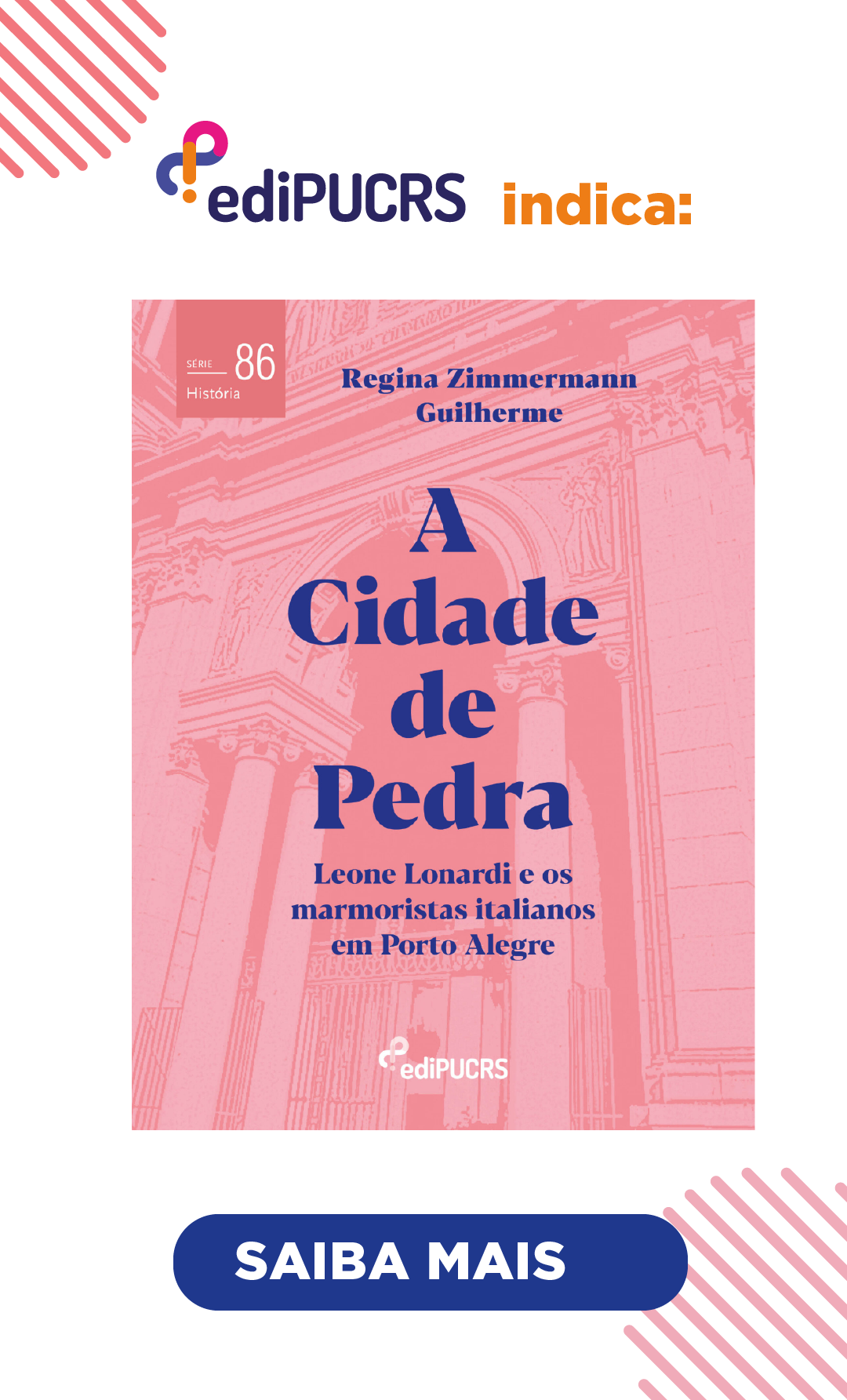Photography and anthropogenesis: man's best friend
DOI:
https://doi.org/10.15448/1980-864X.2018.1.27487Keywords:
photography, dogs, dwarfs, anthropological machine.Abstract
Examining how philosophy operates the human/animal distinction throughout its history, Giorgio Agamben concluded that any concept of humanity should both exclude and include animal nature. He called this metaphysical device “anthropological machine” – the historical process that produces separations and reconciliations between humanity and animality (such as the relations between body and soul, for example). Inside this machine, there would be a zone of indetermination where it is possible to perceive the tension between people and animals, where the movement of separation is suspended and the machine itself exhibits its clunking gear. Could this moment be caught? Is it possible to visit this place? The premise of this research is that the photographic camera, as an anthropological machine, has its anthropogenic role particularly visible when humans are photographed accompanied by dogs. Discussing works by painters such as Velasquez and Rembrandt and photographers such as Robert Capa and William Wegman, this essay aims to justify this premise.
Downloads
References
AGAMBEN, Giorgio. The Open: Man and Animal. Stanford: Stanford University Press, 2004.
BAILLY, Jean-Christophe. El Animal como pensamiento. Santiago: Metales Pesados, 2014.
BARTHES, Roland. A Câmara Clara. Lisboa: Edições 70, 1979.
BENJAMIN, Walter. Obras Escolhidas I. São Paulo: Brasiliense, 1985.
BENJAMIN, Walter. Obras Escolhidas II. São Paulo: Brasiliense, 1987.
BENJAMIN, Walter. Radio Benjamin. London: Verso, 2014.
BORGES, Jorge Luis. “O Imortal”. In: O Aleph. São Paulo: Globo, 1996.
CADAVA, Eduardo. Words of Light. Princeton: Princeton University Press, 1992.
CRASKE, Matthew; FEEKE, Stephen. Hounds in Leash. The Dog in 18th and 19th Century Sculpture. Leeds: Henry Moore Foundation, 2000.
DELEUZE, Gilles; GUATTARI, Félix. Kafka, por uma literatura menor. Rio de Janeiro: Imago, 1977.
FOUCAULT, Michel. As Palavras e as Coisas. São Paulo: Martins Fontes, 1992.
HEIDEGGER, Martin. Os Conceitos fundamentais da Metafísica: Mundo – Finitude – Solidão. Rio de Janeiro: Forense Universitária, 2015.
HEMPEL, Amy. “William Wegman; the artist and his dog”. The New York Times Magazine (New York), 29/11/1987. Disponível em: <http://www.nytimes.com/1987/11/29/magazine/williamwegman-the-artist-and-his-dog.html?pagewanted=all>. Acesso em: 21 maio 2017.
HESSE, Herman. The Fairy Tales of Hermann Hesse. Londres: Bantam Books, 1995.
KAFKA, Franz. “Investigações de um cachorro”. In: A Muralha da China. São Paulo: Exposição do Livro, s/d.
LEACH, Maria. God had a dog; folklore of the dog. New Brunswick: Rutdgers University Press, 1961.
LETTERMAN, David. “William Wegman and his dog Man-Ray on David Letterman” (David Letterman Show). Disponível em: <https://www.youtube.com/watch?v=6gsrIGeS_qQ>. Acesso em: 21 maio 2017.
LÉVI-STRAUSS, Claude. La Pensée sauvage. Paris: Plon, 1962.
LEVINAS, Emmanuel. “Nombre de un perro, o el derecho natural”. In: Difícil Libertad. Buenos Aires: Lilmod, 2004.
MORTON, Stephen. “Troubling Resemblances, Anthropological Machines and the fear of wild animals: Following Derrida after Agamben”. In: TURNER, Lynn. The Animal Question in Descontruction. Edinburgh: Edinburgh Universty Press, 2013.
NIETZSCHE, Friedrich. Twilight of the idols. Middlesex: Penguin Books, 1972.
STRATTON-PRUITT, Suzanne L. “Introduction” in: Velasquéz’s Las Meninas. Cambridge: Cambridge University Press, 2003.
SWANTON, John R. Tlingit Myths and Texts. Bureau of American Ethnology Bulletin, n. 39, 1909. Disponível em: <http://sacredtexts.com/nam/nw/tmt/tmt005.htm>.
WEGMAN, William. William Wegman Short Films [1972]. Disponível em: <https://www.youtube.com/watch?v=9xYxxcqbPeU>. Acesso em: 21 maio 2017.
Downloads
Published
How to Cite
Issue
Section
License
Copyright (c) 2018 Mauricio Lissovsky

This work is licensed under a Creative Commons Attribution 4.0 International License.
Copyright
The submission of originals to Estudos Ibero-Americanos implies the transfer by the authors of the right for publication. Authors retain copyright and grant the journal right of first publication. If the authors wish to include the same data into another publication, they must cite Estudos Ibero-Americanos as the site of original publication.
Creative Commons License
Except where otherwise specified, material published in this journal is licensed under a Creative Commons Attribution 4.0 International license, which allows unrestricted use, distribution and reproduction in any medium, provided the original publication is correctly cited.






